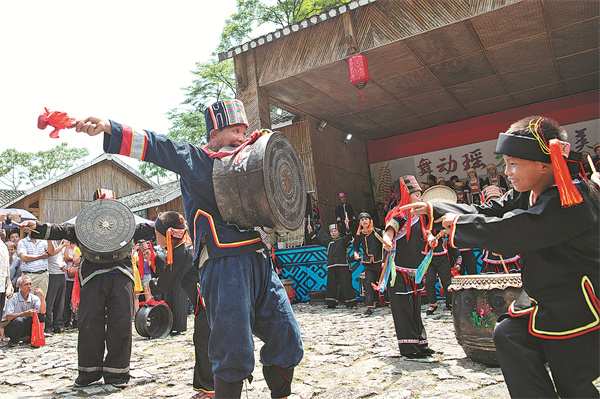

Since the end of the "cultural revolution", Chen has been collecting bronze drums and working as a TCM doctor in his county. He now has the largest personal collection of bronze drums belonging to the Zhuang people.
The history of bronze drums in Guangxi can be traced back 2,000 years.At present, there are a little more than 2,000 bronze drums of the Zhuang people in museums around the world, of which 612 are in Donglan, which is the largest collection anywhere.
"Bronze drums integrate smelting,casting, sculpture, painting, decoration, music, dance and religion," said Chen. "It is a national cultural heritage integrating cultural diversity and uniqueness."
Collecting, protecting, dancing with and holding bronze drum competitions are now popular in Donglan today. Not only has the tool that was once seen as a symbol of backwardness reclaimed its status in the Zhuang people's social life,traditions and religion, but also the "living fossil" of the Zhuang people has become an important tourist attraction that is reviving the cultural industry there.
The bronze drum has been handed down from generation to generation,but few people know its history. Chen has tried to catalogue the stories associated with each bronze drum he collected. Every time he received a bronze drum, he asked the owner what was unique about its shape, the significance of its design, what legend the pattern represented and more.
Each bronze drum has its unique design and patterns that are related to folk legends, myths and traditions of the Zhuang people. As Chen puts it,each drum has a "soul".